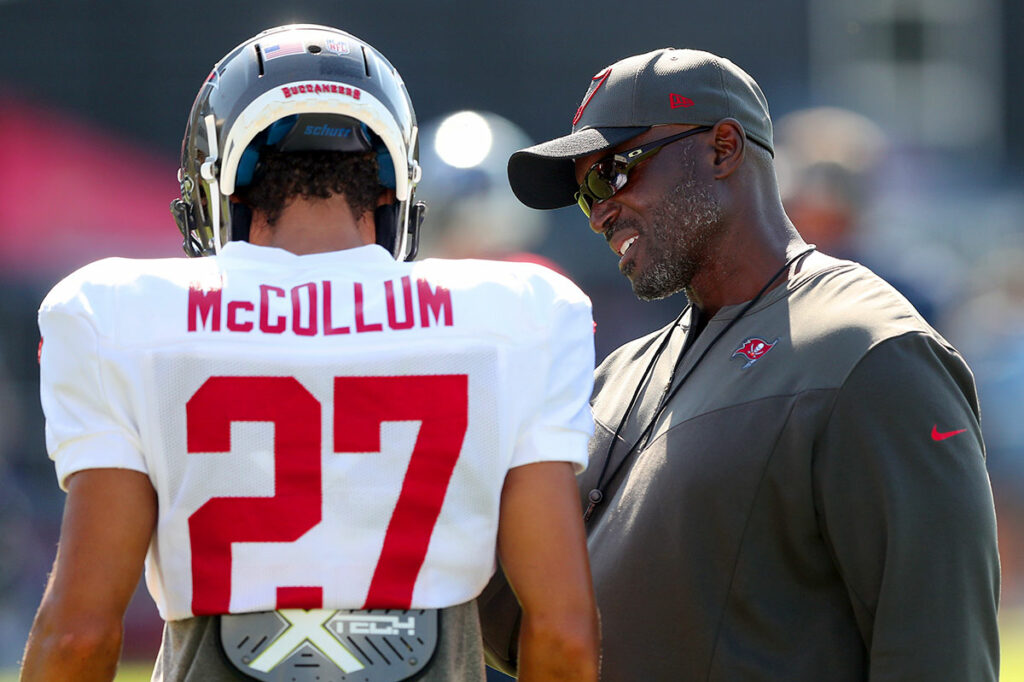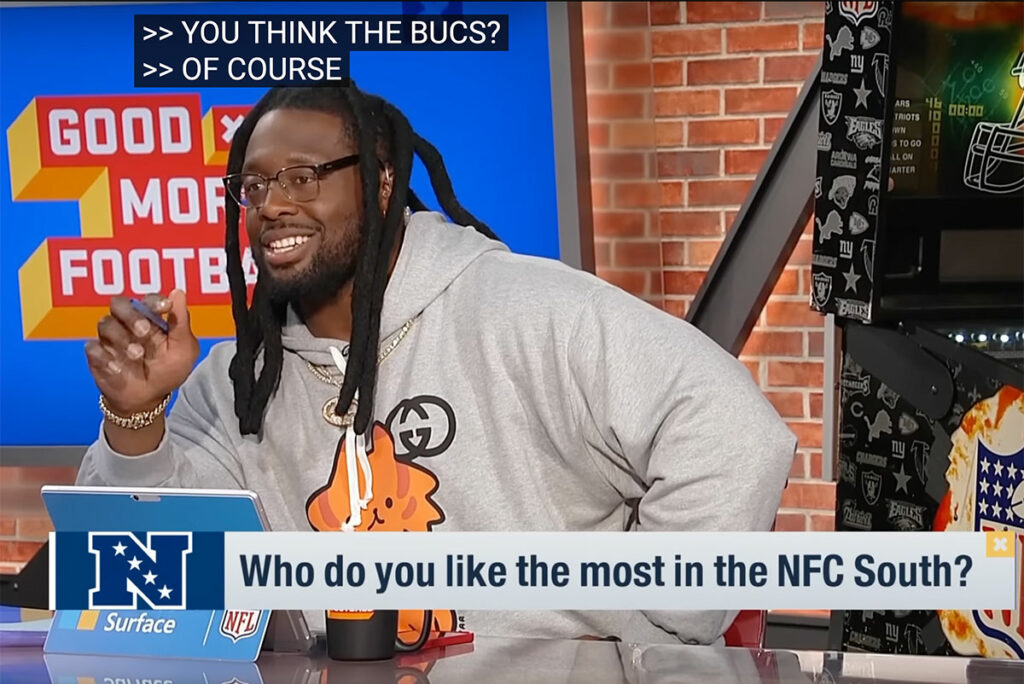There’s a new (deputy) sheriff in town for the Bucs. Gone is former offensive coordinator Byron Leftwich. In his stead stands first time play-caller Dave Canales. And with Canales comes a whole new offensive philosophy and scheme.
I detailed some of the new elements that will come with Canales in a piece shortly after his hiring. Over this summer I hope to expand on those initial elements by looking at schematic themes from different Seahawks games from last year. Today I’ll start with the first game of Seattle’s season last year against Denver. To be clear, Shane Waldron is Seattle’s offensive coordinator and play-caller, but Canales was the Seahawks former passing game coordinator and quarterbacks coach and had plenty of input in game plans and on game day.
Lots of Motion
One of the first things that pops out is how often Seattle used motion against Denver. This will be in stark contrast to the offense the Bucs ran last year. And the difference isn’t just in volume, although that is going to change. Of the 53 non-punting/kicking offensive snaps the Seahawks used pre-snap motion on 22 of them. That was 41.5% of their plays.
But more noticeable than the frequency of motion is the type. The 2022 version of the Bucs used static motion where the player in motion came set prior to the snap.
As a contrast to that, the Seahawks used a lot of jet, rocket, laser and orbit motion pre snap. Matty F. Brown detailed much of it in an article he wrote for Sports Illustrated early after offensive coordinator Shane Waldron arrived in Seattle back in 2021. Jet motion brings a receiver in motion to give the appearance that the play may be a jet sweep handoff to the receiver.
Rocket, laser and orbit motion refer to a running back motioning at the time of snap.
These motions force the defense to adjust on the fly, communicate effectively and ultimately execute at a high level in an ever-changing situation. One of the best examples of how these motions can help create free space came on the fourth drive of the game. On first-and-10 from the Broncos 47 the Seahawks came out in a condensed 2 x 2 from 12 personnel.
Seattle sends tight end Noah Fant in motion on a jet sweep. That, combined with play-action toss to in the direction of the sweep gets the Denver second-level defenders widening. The result is a ton of open room for tight end Colby Parkinson on the shallow crossing route to the opposite side.
Condensed Formations
One popular gripe about the Bucs offense under Leftwich was his use of condensed formations. Those complaints usually came in two forms. The first is by using wide receiver Chris Godwin from the slot in these condensed alignments left him susceptible to big hits from linebackers and additional wear and tear. The second is when the Bucs ran out of these condensed sets they invited additional defenders into a smaller area, making it harder to run successfully.
These things most likely won’t change much under Canales. The Seahawks operate out of condensed sets most of the time and run out of them a lot.
The key difference will be the role of the receiver during these runs. Unlike the Bucs of last year, they rarely attach their slot receiver to the line. Secondly, Canales and the Bucs have already discussed how Godwin will be moving to the outside more often this year.
From a three tight end “wing t” set and the receiver inside the numbers the offense is still inviting a stacked box. And that’s what Denver gives them with eight men near the line of scrimmage and a safety walking up at the time of the snap. This is going to require the Bucs’ new-look offensive line to execute their blocking assignments at a very high level to be successful.
While it can be argued that the condensed packages invite more chaos in the middle of the field in the form of extra defenders, it also creates opportunities on the edges if the offense chooses to attack there. And while the Bucs of yore were content to ignore the edges, this new offensive scheme should welcome those opportunities.
Inviting more defenders into the box removes them from being able to get to the edge easily. So when the offense chooses to attack the edge on an outside zone run or a play action bootleg the defense then has to stretch horizontally in an instant. And when the defense fails to execute quickly the results for the offense can be explosive plays, such as the one below.
Both of these themes run in stark contrast to the Bucs offensive philosophy of 2019-2022.
Whereas the former regime was content on collecting better players and asking them to simply beat the player in front of them, these two schematic designs are charged with creating more advantageous opportunities for the players executing them. Thus, allowing lesser talent to still create better results.
And when the Bucs marry schematic advantages with good football players (Mike Evans, Chris Godwin, Rachaad White, Russell Gage) the results should be better than the 18.4 points per game they averaged last year.
Josh Queipo joined the Pewter Report team in 2022, specializing in salary cap analysis and film study. In addition to his official role with the website and podcast, he has an unofficial role as the Pewter Report team’s beaming light of positivity and jokes. A staunch proponent of the forward pass, he is a father to two amazing children and loves sushi, brisket, steak and bacon, though the order changes depending on the day. He graduated from the University of South Florida in 2008 with a degree in finance.




